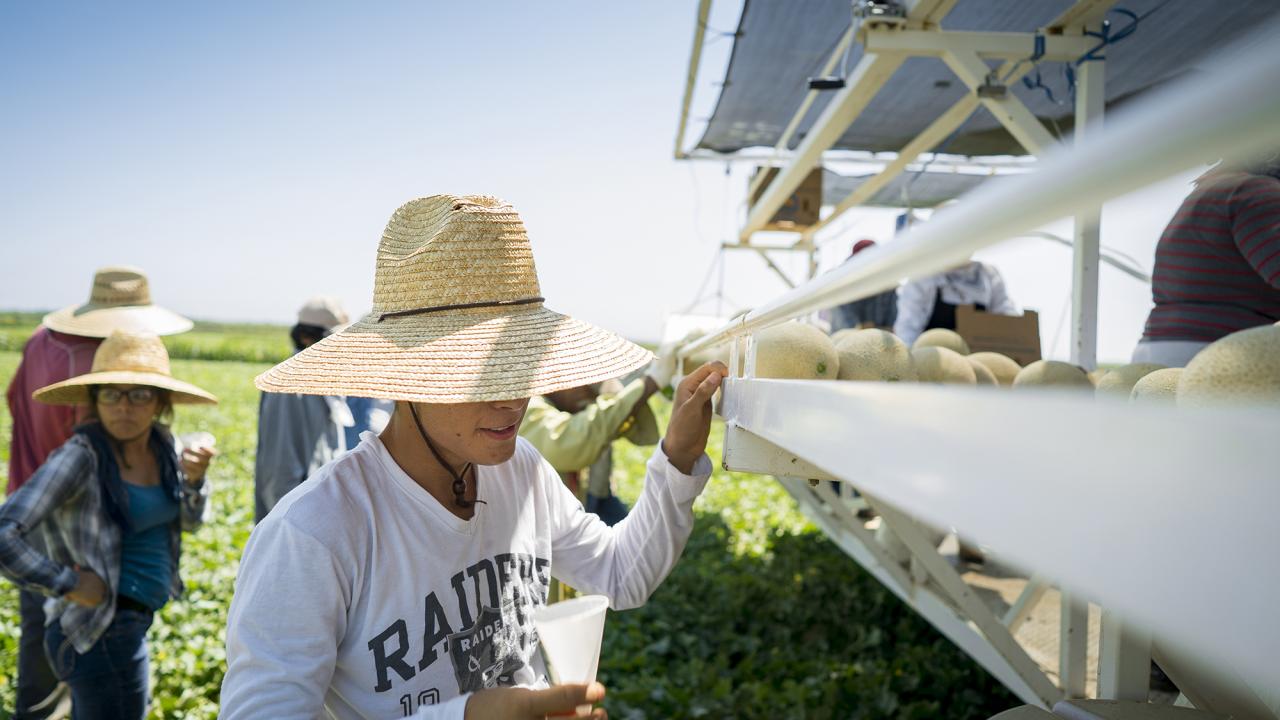
Acclimatization: Getting Used to Working in the Heat
Heat-related illness poses a serious health risk to farmworkers, especially as their work season overlaps with hot summer temperatures. The two types of serious heat illnesses, heat exhaustion and heat stroke, can cause permanent damage to the body or even result in death. On average, approximately five crop workers die from heat illness annually in the US; this is 20 times higher than for all workers.
Workers are at higher risk of heat-related illness if they are not acclimated (or used to) the heat. Cal/OSHA reports that at least half of reported incidences of heat illness and deaths were in unacclimatized workers. Almost half of the reported cases were on the worker’s first day on the job, and 80% were within the first four days.
How to Acclimate to the Heat
To function properly, the body needs to stay between 97 and 99°F. The body adjusts to help maintain this body temperature regardless of what the temperature is outside. The process that helps a person adjust to the heat is called acclimatization. In acclimatized workers, the body cools down faster by sweating more efficiently (i.e., sweating earlier and losing fewer electrolytes through sweat).
It can take up to two weeks for workers to acclimate to the heat. For those two weeks while the body is adjusting to the hotter temperatures, workers are at a higher risk of developing heat illness. It is important that everyone takes extra precautions while acclimating to the heat.
The California Heat Illness Prevention Study (CHIPS) found that while 86% of workers had received training on heat illness prevention within the previous year, only 42% correctly answered a question testing knowledge of acclimatization.
What to do:
- Train workers on early signs and symptoms of heat illness. Emphasize the dangers of working in the heat while unacclimatized, particularly for new workers, at the start of the heat season, and before a heat wave. Be sure to review the key concepts by asking workers questions to ensure their understanding.
- Gradually increase exposure to heat over one to two weeks.
- For new workers, start with 1.5–2 hours of work on their first day, and increase by 1.5–2 hours each day.
- For experienced workers or workers coming back from a break of a week or more, start with a half day’s work on their first day, and then add 1.5–2 hours each day.
- Encourage workers to take extra precautions for the first two weeks, and any time after a break of a week or more from working outside:
- Rest more frequently in shade.
- Work at a slower pace.
- Drink more water.
Resources
Given the importance of training and increasing knowledge, WCAHS has developed discussion guides to help employers communicate the Cal/OSHA heat standard to their employees. In addition, WCAHS offers Heat Illness Prevention trainings for supervisors.
